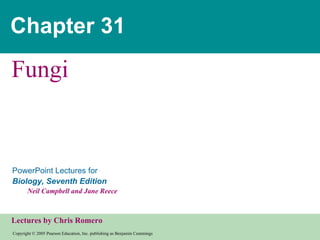Melden
Teilen

Weitere ähnliche Inhalte
Was ist angesagt?
Was ist angesagt? (20)
Classification and diagnostic charecterstics of main plant pathogenic fungi

Classification and diagnostic charecterstics of main plant pathogenic fungi
Andere mochten auch
Andere mochten auch (20)
Ähnlich wie 31 fungi text
Ähnlich wie 31 fungi text (20)
Morphology and general and general properties of fungi

Morphology and general and general properties of fungi
1) Strategies and structuresIn Protozoans the method of movement .pdf

1) Strategies and structuresIn Protozoans the method of movement .pdf